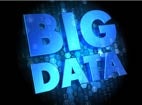It all doesn’t happen in a flash: The next big thing gradually and imperceptibly becomes the current thing. A great example of this is the “smart machine.”
The precise definitions of smart machine differ, but one sensible and simple understanding is that these are systems that can synthesize data from structured (e.g., database, etc.) and unstructured (e.g., emails, videos) sources to make sense or derive lessons. Smart machines will be quite necessary as society deals with another “big thing” that is gradually creeping into our daily lives, the Internet of Things (IoT).
IBM’s Watson is by far the smart machine with the highest visibility and the one that is introducing the public to the concept. It beats the pants off the humans on Jeopardy! and is now being used by Big Blue in a number of vertical businesses. Gartner points out, however, that the smart machine category offers more than just Watson.
The InformationWeek story on smart machines points to well-known platforms, which include Google Now and Apple’s Siri in addition to Watson, as harbingers of the smart machine future. Lesser-known platforms include AlchemyAPI, Digital Reasoning’s Synthesys, Highspot, Lumiata and Narrative Science.
According to The New Yorker, Massachusetts Institute of Technology’s Initiative on the Digital Economy held a conference to discuss the book “The Second Machine Age” by MIT business school professors Eric Brynjolfsson and Andrew McAfee.
The book and the session emphasized that current data workers are in trouble. Computers are getting smarter and deriving more information out of stacks of data. In some ways, these machines have surpassed humans. In others, they are not quite there yet, but the trend line is clear from this passage in The New Yorker article:
That afternoon, for example, McAfee, Brynjolfsson’s co-author, highlighted software that could look at an image of a tissue sample and figure out whether it was cancerous. The software was so effective, he said, that it had quickly surpassed its programmers, learning to detect cancer using methods that they hadn’t anticipated; in the future, it could replace human pathologists.
What resonates is that the system figured out ways to look for cancer that were not imparted to it by programmers, which is a very significant development.
DataRPM looks at the smart machine situation from the perspective of Big Data and offers insight on the arrival of the type of smart machines that IBM and the others are introducing. The concept, called “cognitive computing,” is simply to do what we do, but better:
Originally referred to as artificial intelligence, the science was designed to teach computers to think like a human mind, rather than developing an artificial system. At DataRPM, we apply cognitive computing to Big Data discovery using machines and algorithms to do the heavy lifting that Big Data requires; saving time, effort, and money and adding speed, performance and greater efficiency.
AvStop, the website of Aviation Online, offers a real world and, due to the Malaysian Airlines tragedy, very timely example of what smart machines can do. The Flight Safety Foundation (FSF) is calling for stakeholders in the aviation industry to discuss the current state of technology and ways to improve location tracking. The FSF believes that smart machines can help in a number of areas, including generating real-time data on the status of aircraft and their subsystems and assessments of incidents even after they occur.



